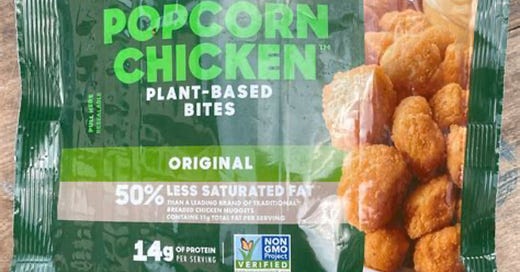Beyond Meat’s GMO Blunder: How Fearmongering Backfired on Fake Meat
Beyond Meat had a choice. They could have stood proudly alongside Impossible Foods, embracing science and innovation in the battle against industrial meat. Instead, they slapped a Non-GMO Project label on their products, pandering to the same crowd that thinks vaccines turn you into a WiFi hotspot. This wasn’t just a branding mistake—it was a strategic failure that ignored the real battlefield of food technology.
The Non-GMO Project: A Badge of Nonsense
For those unfamiliar, the Non-GMO Project label is essentially a marketing tool for companies looking to cash in on anti-science hysteria. It’s the food-world equivalent of putting a “gluten-free” sticker on bottled water—pure nonsense. GMOs have been studied to death and consistently found safe[^1], yet the Non-GMO Project keeps churning out fear-laden propaganda, feeding public misconceptions.
Beyond Meat’s decision to align with them was a calculated move to differentiate from Impossible Foods, whose key ingredient—heme—is produced via genetically modified yeast[^2]. But here’s the problem: The same demographic terrified of GMOs is also terrified of lab-grown burgers. The moment Beyond Meat started marketing itself as the “natural” alternative, they invited scrutiny from the exact same crowd that thinks eating plant-based meat will rewire their DNA and turn them into mutant vegans.
Fear Campaigns Came for Both—And Beyond Meat Blinked
The meat industry didn’t care whether plant-based meats were GMO or not. It attacked both Beyond Meat and Impossible Foods with equal zeal, painting them as “ultra-processed” Frankenfoods[^3]. Ranching lobbyists ran ad campaigns warning consumers that plant-based meats were full of “weird science” and “unnatural ingredients”—a play straight out of the anti-GMO movement’s handbook[^4].
Impossible Foods fought back, embracing their identity as a biotech-driven company. Their CEO, Pat Brown, actively debunked myths about GMOs and defended heme as a scientific breakthrough[^5]. Meanwhile, Beyond Meat tried to play both sides, distancing itself from GMOs while still relying on highly processed ingredients. The result? They looked weak, unprincipled, and ultimately failed to win over the anti-GMO crowd, who remained suspicious of anything that didn’t once moo.
Soylent Got It Right—Beyond Meat Got It Wrong
If Beyond Meat wanted a lesson in how to handle the GMO issue, they could have looked to Soylent. Instead of running from biotech, Soylent leaned into it. Their ads explicitly declared their love of GMOs, mocking the fearmongering surrounding genetic engineering[^6]. By owning their identity, they carved out a loyal, science-literate customer base instead of pandering to the wellness grifters who were never going to be satisfied.
Beyond Meat could have followed that lead, forming a united front with Impossible Foods against the meat industry’s smear tactics. Instead, they validated anti-GMO paranoia, only to find themselves in the crosshairs of the same fear campaigns.
Conclusion: Fear Doesn’t Win Markets
By trying to appease the anti-GMO movement, Beyond Meat weakened its position, confused its brand, and ultimately failed to avoid the attacks it was hoping to dodge. The lesson here is clear: You can’t pander to fearmongers and expect them to be your allies. Next time, maybe just stick to the science.
References
[^1]: National Academies of Sciences, Engineering, and Medicine. Genetically Engineered Crops: Experiences and Prospects. The National Academies Press, 2016.
[^2]: Impossible Foods. “The Science Behind the Impossible Burger.” ImpossibleFoods.com.
[^3]: North American Meat Institute. “Fake Meat? Consumer Confusion About Plant-Based Alternatives.” MeatInstitute.org, 2020.
[^4]: Center for Consumer Freedom. “Ultra-Processed and Full of Chemicals: The Truth About Fake Meat.” ConsumerFreedom.com.
[^5]: Brown, Pat. “Why GMOs Are the Future of Sustainable Food.” ImpossibleFoods.com, 2019.
[^6]: Soylent. “Why We Love GMOs (And You Should Too).” Soylent.com, 2018.




